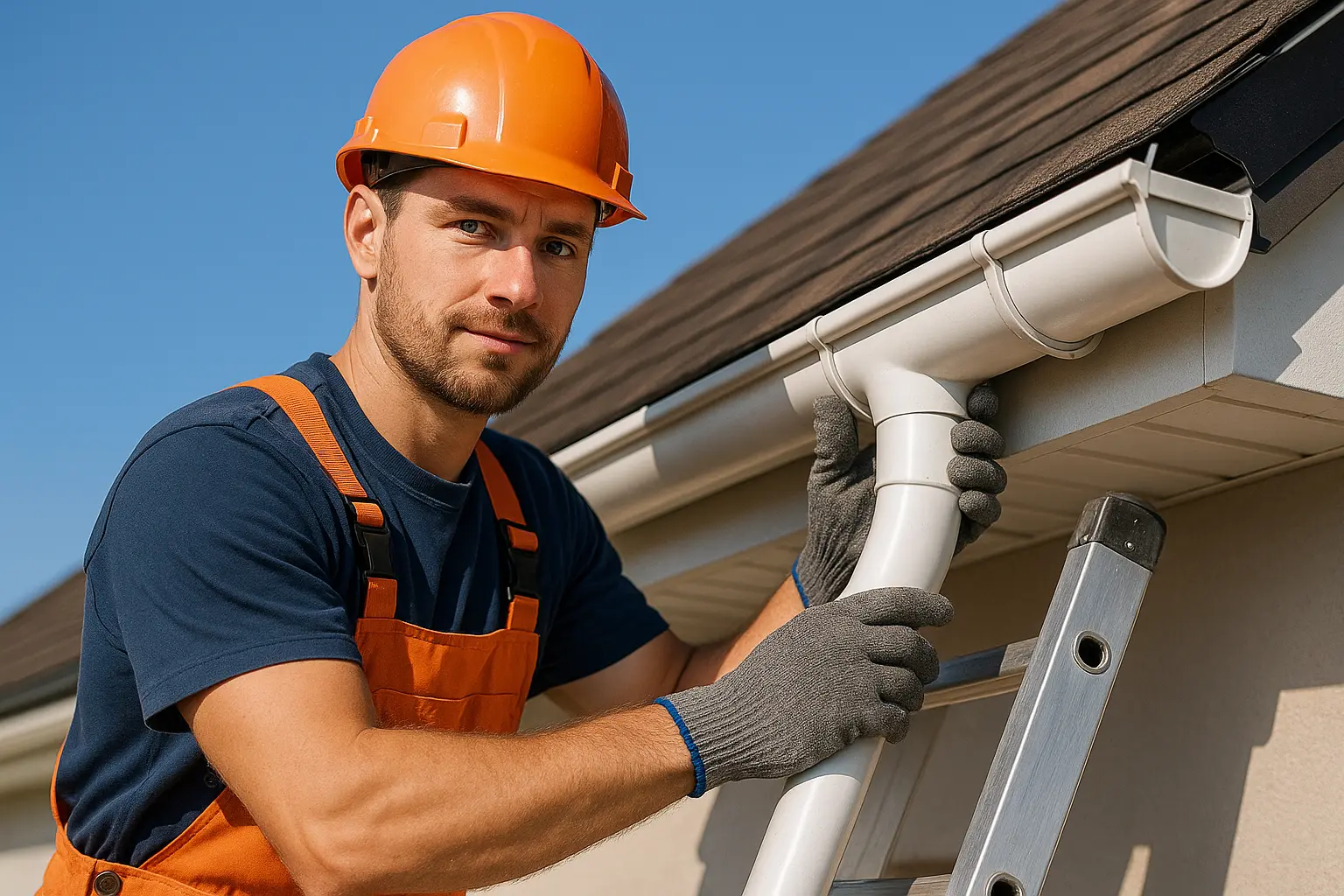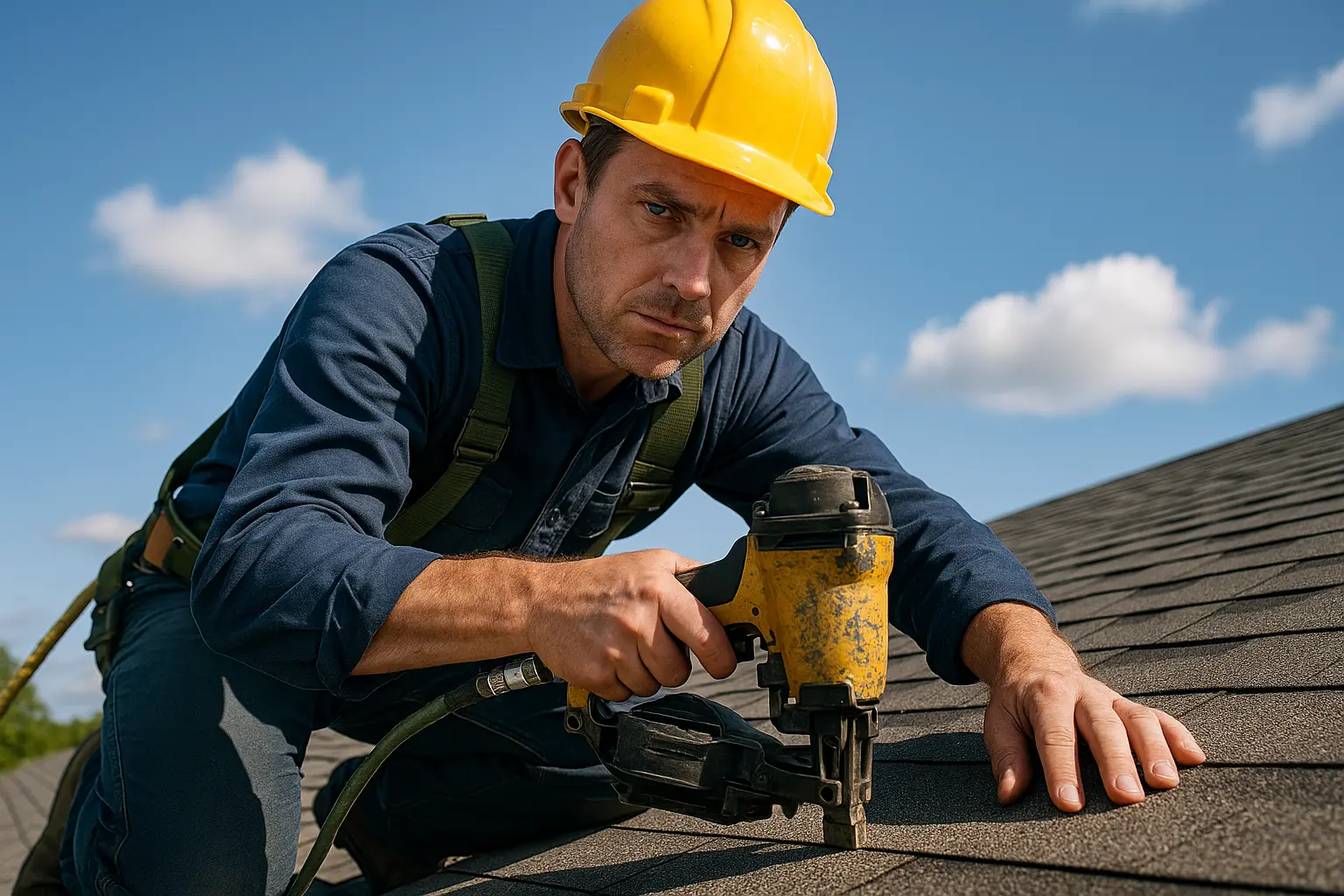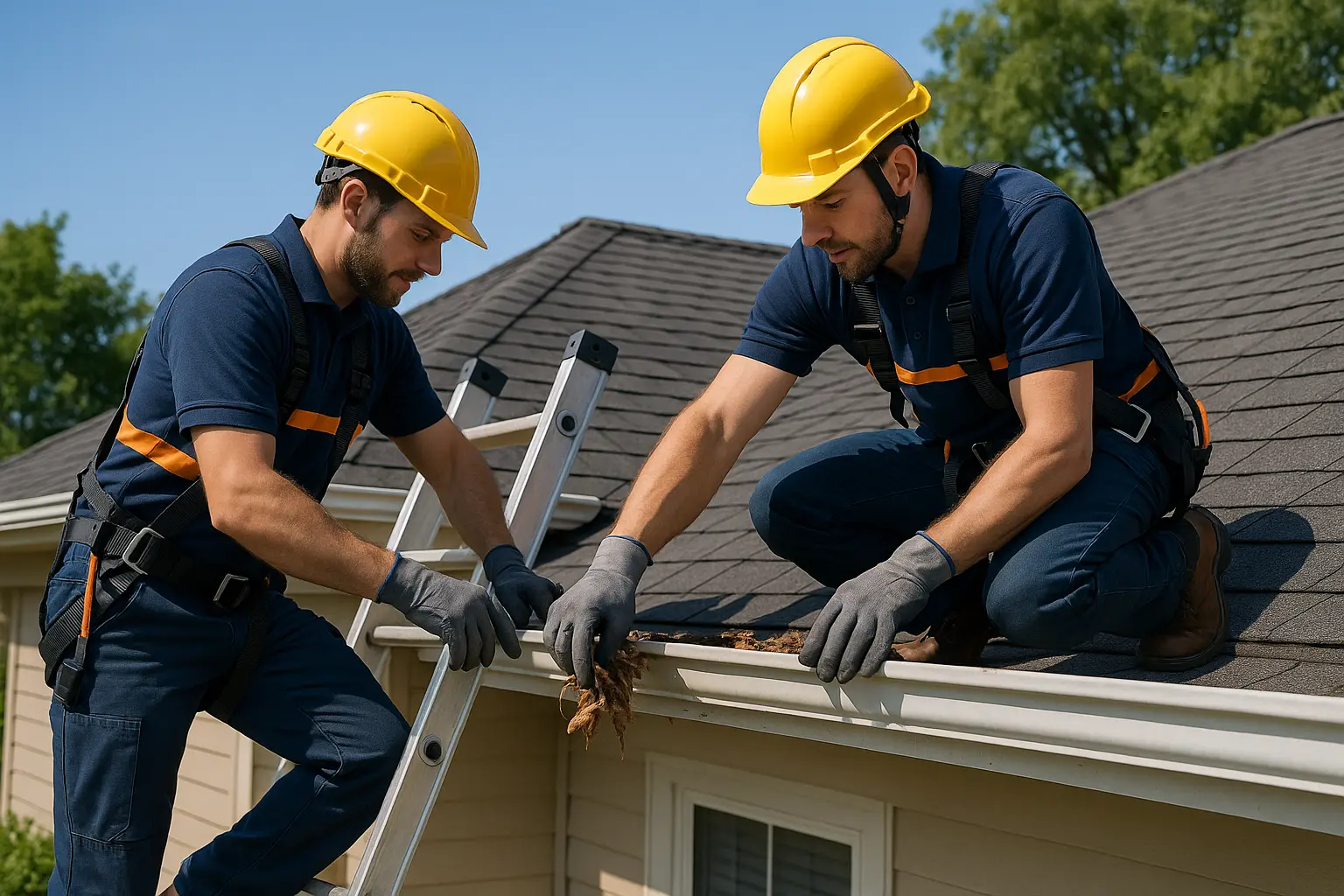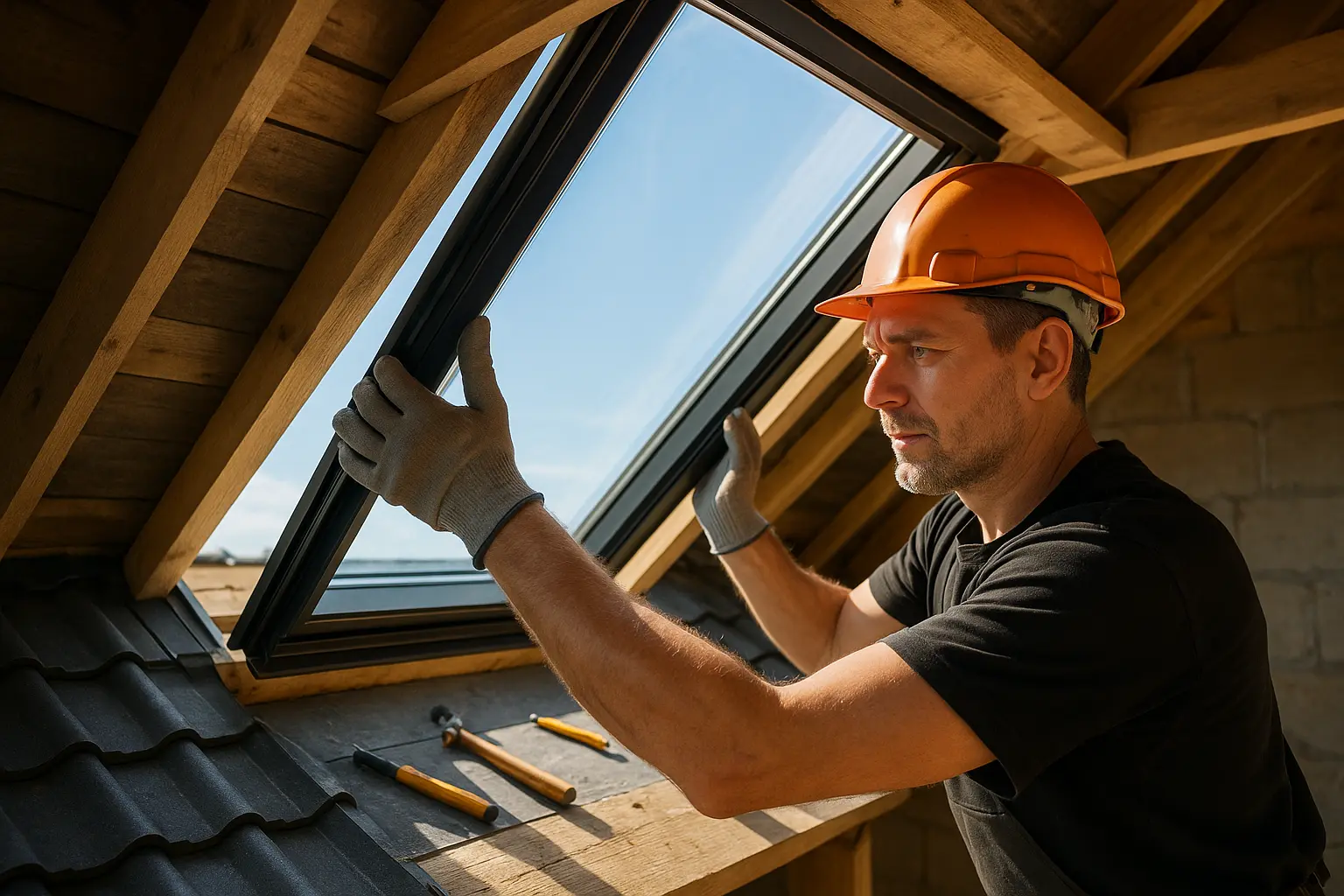Optimizing gutters, downspouts, water flow
All too often, homeowners take little notice of their roof’s drainage system until problems start to pile up. A reliable drainage setup is crucial for protecting your home from leaks, water stains, and even structural damage. In a world where sudden downpours and heavy rainstorms are becoming the norm, directing every drop of water away from your home can save you from expensive repairs later. By learning about and properly maintaining your roof’s drainage, you not only preserve your property but also ease your worries about unexpected costs. In the following discussion, we explore the many reasons why a strong drainage system is essential, examining key elements and the long-term advantages of investing in proper maintenance.
Why Proper Roof Drainage Is Essential
Preventing Costly Water Damage
When water accumulates on your roof, even small cracks can allow it to seep in and create major issues. Homeowners often see the signs through dark water stains, sagging ceilings, and warped floors. A buildup of moisture is not only unsightly but can also lead to expensive repairs as water damage affects walls, insulation, and even wooden structures. Even a brief lapse in keeping water at bay can transform a minor inconvenience into a serious financial headache.
The problems multiply when stagnant water contributes to mold and mildew growth, which can then impair indoor air quality and pose health risks. Consider a scenario where persistent leaks force a homeowner to replace not only the damaged ceiling but also sections of drywall and insulation. These kinds of damages could have been prevented by ensuring that water is efficiently swept away from the roof, highlighting the undeniable importance of attentive roof drainage.
Protecting the Foundation
An often-overlooked consequence of poor drainage is the effect on the home’s foundation. When water is not swiftly diverted away, it can gather around the base of your home, leading to soil erosion and eventual foundation settling. This gradual process can cause cracks and other structural issues which are expensive and disruptive to fix. Many homes in areas with heavy rainy seasons face these challenges because water collects around the foundation, putting the stability of the entire structure at risk.
Simple actions such as keeping the drainage system clear, directing water far from the structure, and checking for blockages in your drainage can help minimize these risks. In regions known for heavy seasonal rainfall, regularly scheduled maintenance is essential for preventing long-term damage that might compromise both aesthetics and stability of the home.
Extending Roof Lifespan
Staying on top of your roof’s drainage also means extending the life of your roof. When water lingers, it puts extra weight and pressure on roofing materials, accelerating wear and tear. Asphalt shingles, for example, are prone to shedding their protective adhesive when repeatedly soaked, leading to early deterioration.
Homes with well-installed drainage systems tend to save money by cutting down on the need for frequent shingle replacements and extensive repairs. With proper maintenance to ensure that water is immediately directed away, the roof not only stays in better shape longer but also reduces risks such as ice dam formation during freezing weather. The takeaway is simple: a proactive approach to managing your roof’s moisture is a wise investment in the durability of your entire structure.
Key Components of an Effective Drainage System
Understanding gutters, downspouts, water flow in Home Maintenance
Central to a robust drainage setup are the elements like gutters and downspouts. Strategically positioned at the edges of your roof, gutters capture water as it runs off during rain or melting snow. Downspouts then guide this water, steering it safely away from your home’s foundation. For homeowners, understanding how gutters, downspouts, water flow together is vital in preventing water from wreaking havoc on multiple levels of the house.
Regular cleaning of these components is key. Debris such as leaves or twigs can block the flow, causing water to spill over and damage external walls or the roof itself. Over time, neglected maintenance might mean costly repairs or even replacement of certain parts. In practice, investing a little time in cleaning and ensuring proper alignment not only keeps water moving properly but also saves significant repair costs down the line.
There are various styles and materials when it comes to choosing gutters. Options range from standard aluminum to more durable copper systems. In coastal regions, for example, using materials resistant to salt water is crucial. When combined with accessories like gutter guards, these choices ensure that your drainage system is both efficient and enduring regardless of the local weather challenges.
The Role of Roof Slope and Layout
The pitch or slope of your roof is not just a design choice—it plays a major role in water management. Steeper angles naturally help rainwater run off faster, reducing the likelihood of pooling. Meanwhile, flatter roofs might require extra drainage solutions to compensate for the slower water runoff.
Architects and roofers emphasize aligning roof design with efficient drainage. Elements such as valleys and ridges must be positioned to assist gravity in channeling water toward gutters or specialized drains. Homeowners in areas with heavy rainfall might even modify their roof’s layout to improve water flow, ensuring that every part of the system works harmoniously. The coordination between structural design and proper drainage is key to a long-lasting roof.
Ensuring smooth water run-off by controlling the roof’s pitch and layout not only protects your home from water buildup but also enhances the effectiveness of other components such as membranes and internal drains. In this way, paying attention to these details contributes to a stronger, more resilient structure overall.
Strategic Drain Placement
For roofs that are flat or nearly flat, the placement of drains is critical. Without natural flow, these roofs depend entirely on well-positioned drains to prevent water from stagnating. Drains should be carefully installed where water tends to pool to avoid leaks and possible structural damage.
Take a commercial building as an example. Engineers often plan for multiple drains so that if one becomes blocked, the others can handle the excess water. Regular checks are important because debris or sediment can easily clog these drains over time. A neglected drain, even in a small section of the roof, can lead to significant leakage problems, causing both interior and exterior damage.
Experts recommend consulting with professionals to design a drain system that suits your roof’s unique dimensions and local weather patterns. Modern solutions, including self-cleaning drains, have added safety nets to prevent blockages. This strategic planning is an essential aspect of managing how gutters, downspouts, water flow across your property and away from vulnerable areas.
Benefits of a Well-Maintained Roof Drainage System
Early Detection of Issues
Scheduling regular inspections for your roof drainage not only keeps your system in check but also helps in spotting problems early. By routinely checking all components, from gutters to downspouts, homeowners can catch small issues—like a loose seal or the beginnings of rust—before they escalate into damaging repairs. An early intervention approach is often much less expensive than waiting until significant damage occurs.
For example, one homeowner discovered a blockage caused by fallen leaves early in the season. By addressing it before the rains picked up, they prevented water from overflowing and causing damage to the siding and foundation. Routine checks are also a good time to test whether the system’s design is still efficient. This habit ensures that even the hidden parts of your drainage system remain in proper condition, protecting your home from issues that could develop into major repairs.
In many regions with harsh weather, professional roof inspectors suggest that a twice-yearly visit can be very beneficial. These inspections help identify and resolve vulnerabilities in the system, reducing future repair costs and maintaining the integrity of your home over time.
Enhancing Overall Home Safety
When the drainage system works as it should, the whole home becomes safer. Leaks or improper water runoff can create slippery surfaces on patios, decks, or steps, which might lead to falls and injuries. Furthermore, water intrusion can compromise electrical systems and create dangerous conditions that could even lead to fires. Maintaining clear pathways for water ensures that these hazards are minimized.
In one case, a blocked gutter led to water seeping into electrical areas, causing a short circuit that nearly resulted in a fire. Regular maintenance and ensuring that the system operates correctly play a significant role in keeping your home safe. By making sure that water is directed outwards and away from high-risk areas, you boost both the safety and functionality of your living space.
Clear drainage pathways, especially in areas with a lot of foot traffic, are essential. A well-thought-out layout of gutters, downspouts, water flow not only preserves your physical structure but also helps avoid slip-related injuries in and around your home.
Uplifting Your Home’s Value
When it comes time to sell, a properly maintained drainage system can become a strong selling point. Homes that display clear signs of upkeep, especially in critical areas like the roof and foundation, tend to attract higher offers. Prospective buyers notice the care that has gone into efficient water management, making them feel more confident about future maintenance and fewer repair worries.
Real estate experts point out that a home with a modern and efficient drainage setup, including components that control gutters, downspouts, water flow, often commands a higher market value. Updated systems not only prevent immediate damage but also signal that the homeowner has taken steps to mitigate future issues, which is a compelling factor for buyers.
Enhancements such as adding durable materials to your gutters and strategically positioning downspouts contribute greatly to the aesthetic and functional value of the property. This attention to detail reassures buyers that they are making a safe and sound investment, underlining the long-term benefits of a well-maintained roof drainage system.
Final Thoughts
In wrapping up, attention to proper roof drainage is far more than a mere home improvement task. It is a central component in protecting the overall integrity, safety, and longevity of your property. When managed well, responsible maintenance prevents water damage, preserves the foundation, and lengthens the life of your roof, thereby saving money and stress over time.
The synergy of elements like gutters and downspouts, the importance of an ideal roof pitch, and strategic drain placement all contribute to a robust solution that handles water effectively. Regular checks and proactive cleaning play an essential role in identifying and addressing minor issues before they turn into major headaches.
Homeowners who keep up with routine maintenance of their drainage systems are not only guarding their property against the unpredictable nature of weather but are also making a smart financial decision. As we’ve seen, neglecting water management can lead to severe and costly damage that might have been easily prevented.
If you suspect that your current setup might be lagging in performance, it might be time to consult with a professional. A tailored maintenance plan and expert evaluation can enhance the way gutters, downspouts, water flow on your roof, ensuring your home remains a safe and valuable asset for many years to come.
Optimizing your drainage system, including the smart use of components that aid gutters, downspouts, water flow, sets you up for long-term peace of mind. Embrace the habits of regular inspections and prompt repairs to keep your home in top condition—because every drop counts when it comes to protecting your shelter.





